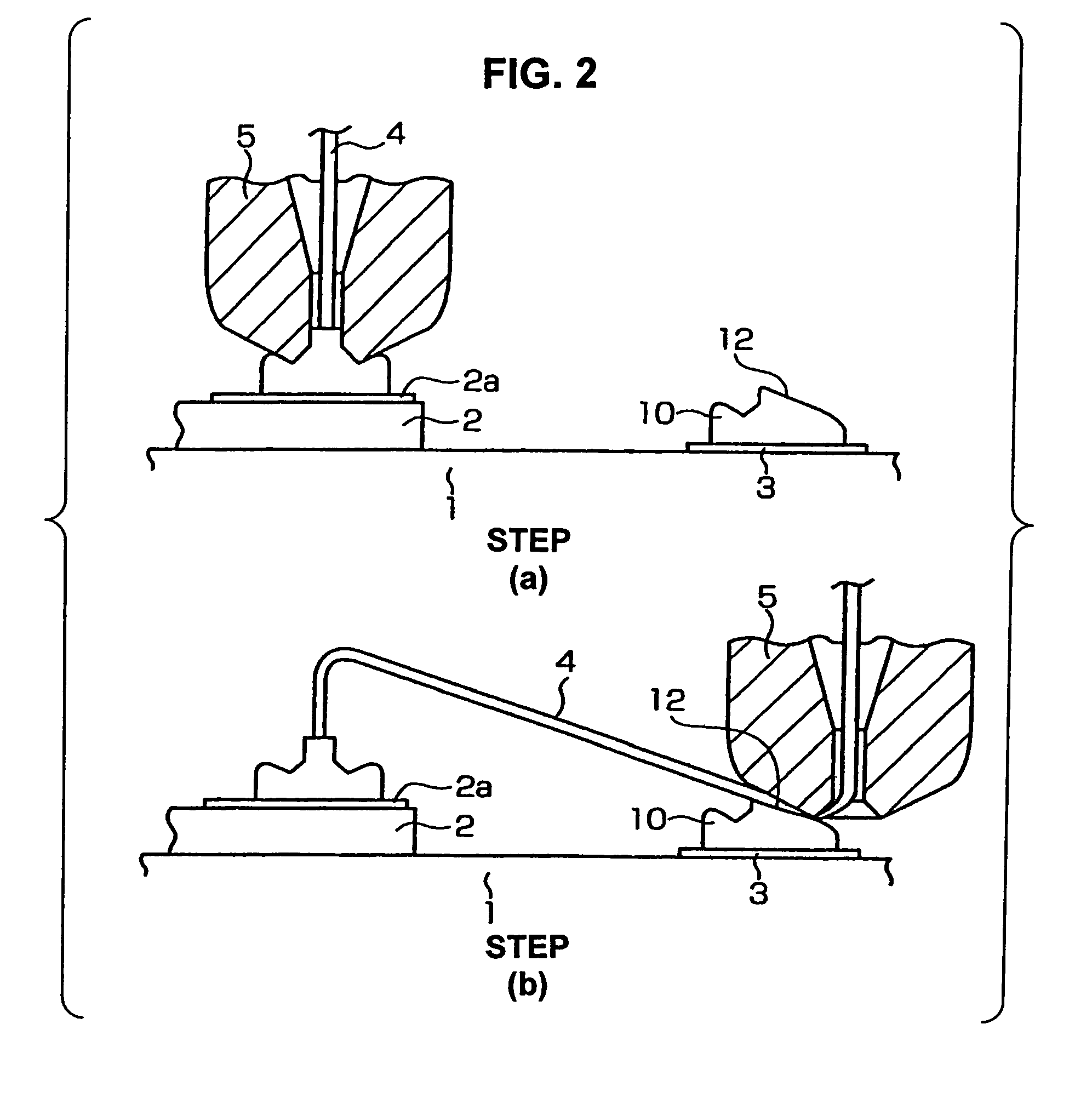Wire bonding method
a wire bonding and wire technology, applied in the field of wire bonding methods, can solve the problems of the method of the japanese patent application laid-open (kokai), the inability to prevent contact between the wire and the circuit board, and the inability to ensure the inclination and flat surface of the joining of the wire and bump, so as to improve the reliability of the bonding joint and ensure the stability of the wire loop
- Summary
- Abstract
- Description
- Claims
- Application Information
AI Technical Summary
Benefits of technology
Problems solved by technology
Method used
Image
Examples
Embodiment Construction
[0015]The wire bonding method of one embodiment of the present invention will be described below with reference to FIGS. 1 and FIG. 2. In FIG. 2, the step (b) shows the completed state of wire bonding between a die and wiring performed using the wire bonding method of one embodiment of the present invention.
[0016]As seen from the step (b) in FIG. 2, a die 2 on which a pad 2a is formed is mounted on a circuit board 1 which is a substrate such as a ceramic substrate, printed substrate, etc. or is a lead frame, etc. Wiring 3 is formed on the circuit board 1. A bump 10 is formed on the wiring 3, and a wire 4 is connected between the pad 2a and bump 10. The reference numeral 5 is a capillary through which the wire 4 passes.
[0017]The wire bonding shown in completed step (b) in FIG. 2 is obtained by the steps described below.
[0018]First, as shown in step (a) of FIG. 1, a ball 4a is formed by an electric torch (not shown) on the tip end of the wire 4 that passes through the through-hole 5a ...
PUM
| Property | Measurement | Unit |
|---|---|---|
| height | aaaaa | aaaaa |
| surface area | aaaaa | aaaaa |
Abstract
Description
Claims
Application Information
 Login to View More
Login to View More - R&D
- Intellectual Property
- Life Sciences
- Materials
- Tech Scout
- Unparalleled Data Quality
- Higher Quality Content
- 60% Fewer Hallucinations
Browse by: Latest US Patents, China's latest patents, Technical Efficacy Thesaurus, Application Domain, Technology Topic, Popular Technical Reports.
© 2025 PatSnap. All rights reserved.Legal|Privacy policy|Modern Slavery Act Transparency Statement|Sitemap|About US| Contact US: help@patsnap.com



